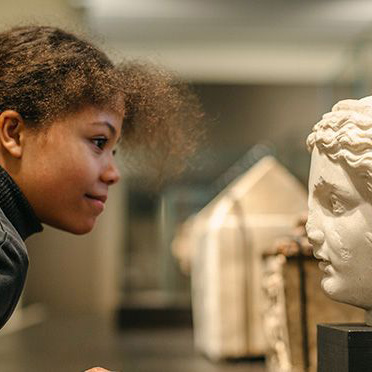
- Series: “Thirty-Six Views of Mt. Fuji”
- Fugaku sanjûrokkei 冨嶽三十六景
- 1830 – 1833
- Publisher: Nishimuraya Yohachi西村屋与八 (Eijudô; active c 1762 – 1835)
- Signature: saki no Hokusai Iitsu hitsu 前北斎為一筆
- Marks: no
- Format: horizontal large-size print (ôban yoko-e)
- Medium: multicolor woodblock print (nishiki-e); ink and colors on paper
Katsushika Hokusai was born into a family of artisans and began painting as early as the age of six. By fourteen he had become an apprentice of an ukiyo-e workshop. He worked up to the end of his life, making his most well-known masterpieces in his sixties and seventies. He joined literary circles and made illustrations for humorous verses (kyôka), but went on to devote himself to subjects entirely his own, such as Mt. Fuji seen from different angles.
We also find motifs of waterfalls, flowers, bridges, and poetry (Chinese and Japanese). Hokusai did studies of the miniature world of birds, flowers, and insects, but also of wide expanses of landscape, sometimes with a telescopic view. This he may have learned after seeing European works. He was also a creator of erotica, such as the “Lovers with Mirror” (c 1810).
This print depicts a journey through the sacred mountain’s hinterland. Hokusai experienced such great demand for his series called “Thirty-Six Views of Mt. Fuji” that he created ten extra prints. “Back of Mt. Fuji Seen from Minobu River” is one of these additional motifs. The volcanic and conically-shaped Mt. Fuji is an object of identity, both in Buddhist iconography and in Shinto mythology. In Shinto it is connected with a female ancestress of the imperial lineage.
The journey as a topic for ukiyo-e masters: By way of comparison, a recurring motif for Hiroshige was the journey “up to” the imperial capital, Kyoto. Whatever the lay of the land – level or steep – the journey toward the capital and the Emperor’s abode is always a “climb.” Even on the level land of today’s capital, Tokyo, trains “ascend” when they reach the vicinity of the Imperial Palace. They begin to “descend” as they pass by.
Mt. Fuji is the nation’s summit within the landscape; the Imperial Palace is the nation’s summit within the cityscape. A journey for the great ukiyo-e master Hiroshige was therefore a passage both through a natural landscape and a political landscape.
On loan from The National Museum of Art, Architecture and Design, Oslo.

- Series: “Remarkable Views of Bridges in Various Provinces”
- Shokoku meikyô kiran 諸国名橋奇覧
- c 1834
- Publisher: Nishimuraya Yohachi西村屋与八 (Eijudô; active c 1762 – 1835)
- Signature: saki no Hokusai Iitsu hitsu 前北斎為一筆
- Marks: censor's seal in red (kiwame), publisher's seal in red
- Format: horizontal large-size print (ôban yoko-e)
- Medium: multicolor woodblock print (nishiki-e); ink and colors on paper
Hokusai devoted a whole series of prints to the theme of bridges. This view is from a crossing at the Tone River. Boats serving as pontoons offer little stability against the current, which causes the bridge to swerve at a sharp angle.
On loan from The National Museum of Art, Architecture and Design, Oslo.









